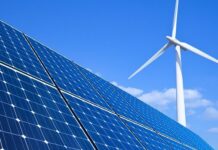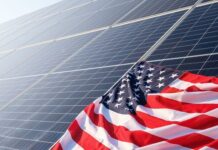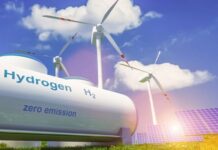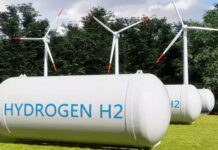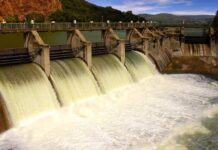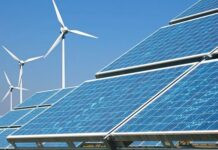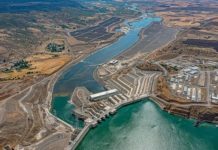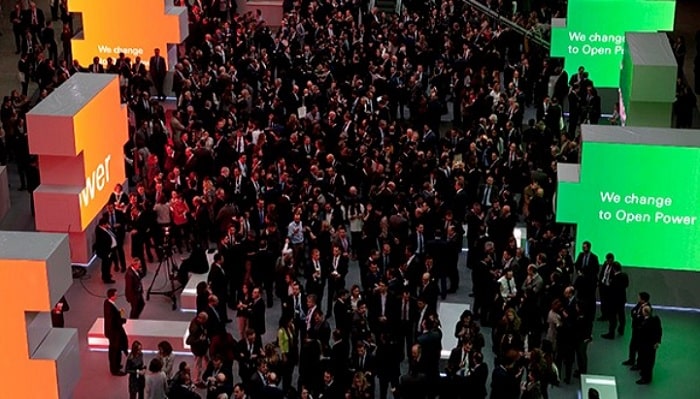The new permanent interactive exhibition at the Acquoria hydro power plant was inaugurated. It is a multimedia experience to discover the five sources of clean and renewable energy: hydro, geothermal, wind, marine, and solar. The objective is to provide an innovative approach to describe how renewable energy is created and to highlight the excellence of the region.
The exhibition was inaugurated by Mauro Alessandri, Lazio Region Infrastructure Councilor, Giuseppe Proietti, Mayor of Tivoli, Antonio Cammisecra, CEO of Enel Green Power, and Michele Bologna, Head of Communications Enel Green Power. Antonio Cammisecra, CEO of Enel Green Power said: “With the Interactive Plants initiative we want to introduce the world of renewable energy, especially to the new generations, using simple and accessible language that explains the fundamental role they play in the energy transition process. The exhibition uses new media technologies to tell the story of the world of energy, emphasizing how innovation and sustainability are core elements of Enel’s industrial development model and key ingredients to strengthen our global leadership.”
The installation for the Interactive Plants posed the great challenge of communicating intangible content, such as energy, making it tangible and experiential, and of conveying, through Interaction Design, complex topics, such as energy production or its relationship with the geography of the world. Our experience has enabled us to implement a considerable amount of technological and exhibit design experimentation. The Acquoria power plant project follows that of the Taccani power plant in Trezzo sull’Adda: a scalable installation that can be replicated in other power plants of Enel Green Power,” said Laura Dellamotta, co-founder and general manager of Dotdotdot.
The Interactive Plants project tells the story of energy in an innovative way, enveloping and fascinating its visitors, by setting up a narrative environment that, in its simplicity and adaptability to the different spaces of the facilities concerned, manages to move and involve people. The journey begins immediately with a spark: energy embedded in each of us. A camera equipped with depth sensors detects the movement of visitors, which is transformed into watts to quantify the energy produced by the body. There is no lack of historical aspects and the timeline of technological discoveries, but revised in an interactive light. The tour culminates in a circular and immersive environment, with a 360° projection that explains the operation of the five sources of energy using videos and graphic animations.
To physically accompany visitors on their exploration, in addition to the “human” guides, there will be from time to time digital alter-egos or characters of the various types of energy. Hydro for hydroelectric energy, Gaia for geothermal energy, Mariasole for solar energy, Levante for wind energy and Marina for marine energy. At the end of the tour, visitors will have to prove that they have become “Energy Ministers” in the field: they will do so by playing a video game to put into practice what they have learned, choosing each time the best scenario based on climate, environment and economy to meet the energy demand of a community. To create greater empathy between characters and visitors, Dotdotdot has focused on the quality of the dialogue. Thanks to voice recognition technology, triggered by keywords through the guide’s helmet, characters respond to visitors’ questions with a “human” and musical voice, far from the depersonalized speech of ordinary digital “voice assistants”. Furthermore, the background sound of the installations, such as the sound of water, wind or fire, is not produced by sampled sounds, but rather is synthesized in real-time. This algorithmic “procedural audio” generates a more realistic effect and a result that varies according to the noise and people present.
The Acquoria power plant, which owes its name to the nearby natural spring, is located on the left bank of the Aniene River, below the archaeological complex of the Sanctuary of Hercules the Winner, one of the oldest religious buildings in history. Two small-scale plants had been built before the current power plant; the first was built in 1884 by engineer Gaulard and aimed at lighting Tivoli, while the second was inaugurated in 1892. During that year, for the first time in the world, alternating current was transmitted at a great distance: from the Acquoria Power Plant Tivoli to the Porta Pia station to illuminate Rome. In 1902 the new Acquoria power plant was built, located at the entrance to the Valle dell’Inferno. The plant was later expanded in 1929 by adding three units consisting of Francis turbines and alternator with vertical axis and power of 17 MVA each, powered by the new San Giovanni waterway. The plant currently produces 154 GWh with the two groups installed on the San Giovanni waterway and 2.9 GWh with a group installed on the Vescovali waterway for a total of 157 GWh.
The Interactive Plants initiative follows the great success of Open Plants, which in 2018 alone was visited by more than 5,000 guests, including many students of schools scattered throughout the country and over 40 companies, which livened up the days dedicated to the “factories of clean energy” showing the excellence of local food and wine and crafts, promoting typical Italian products and thus enhancing a unique world heritage.
Enel Green Power is the Enel Group’s company that operates in the renewable energy sector. A world leader in the clean energy sector, with a managed capacity of around 46 GW and a generation mix that includes wind, solar, geothermal, and hydroelectric power, Enel Green Power is at the forefront of the integration of innovative technologies in renewable plants. Technological diversification is accompanied by geographical diversification. EGP is present today in 29 countries on 5 continents (almost twice as many as 10 years ago): from fully developed economies such as Italy, Spain and the United States to large emerging countries such as Brazil, Mexico, South Africa and India, up to smaller but high-potential countries such as Greece and Panama. And the expansion continues, as attested by recent entries into new markets, including Germany, Russia, Australia, and Ethiopia.
Dotdotdot is a multidisciplinary design agency founded in Milan in 2004, where experimentation is at the basis of innovation. It designs interactive emotional environments in which architecture, design, and layout are blended with digital technologies and new media to create unique experiences, ranging from museum experiences to the development of integrated systems for intelligent buildings. Dotdotdot is a mix of multidisciplinary skills: a team of architects, designers, philosophers, and programmers who overcome differences by embracing the project in its entirety, from the idea to the final result.






